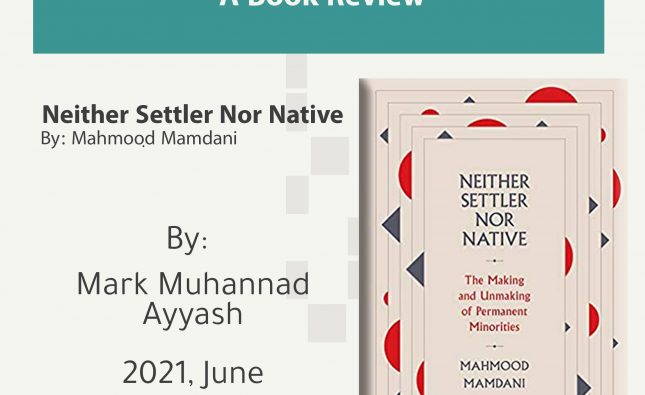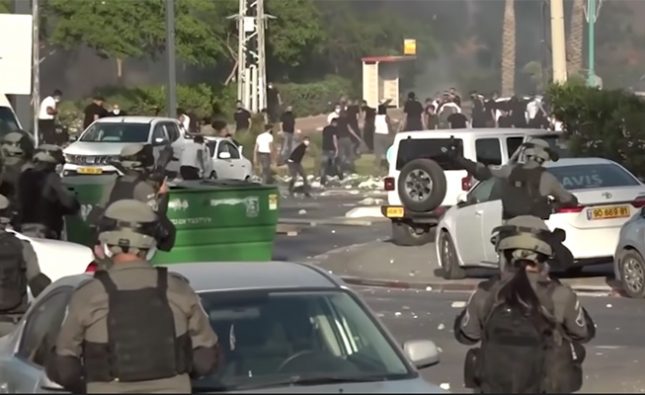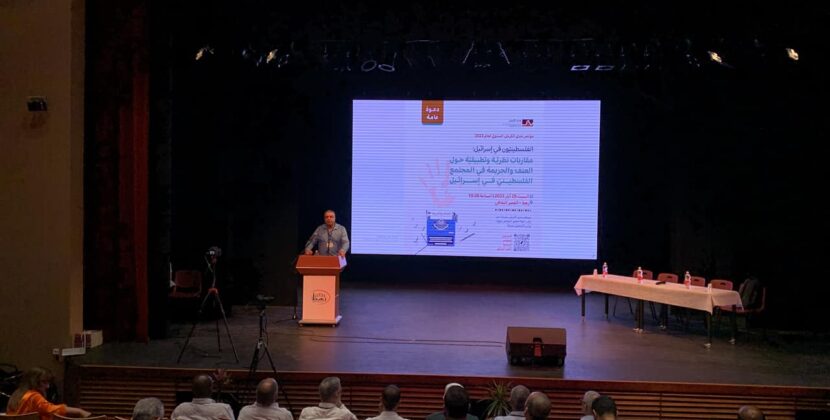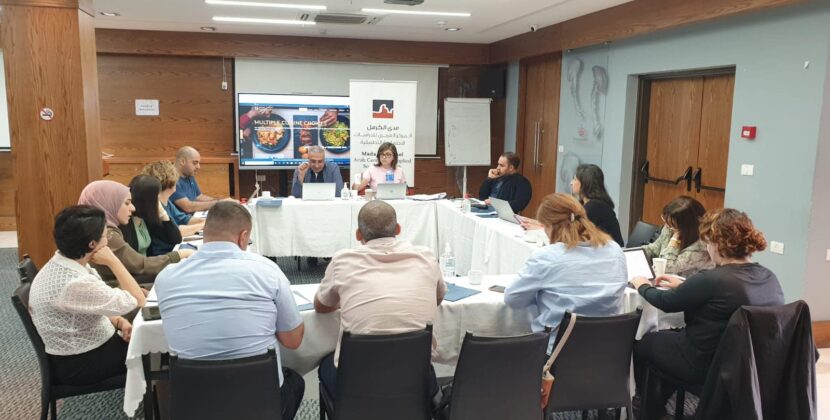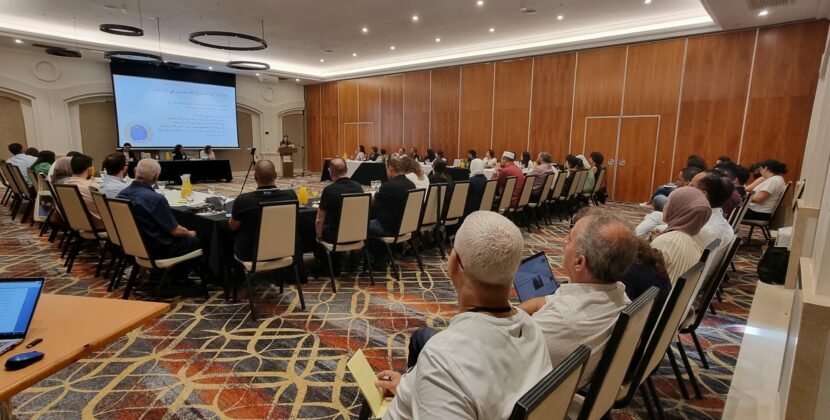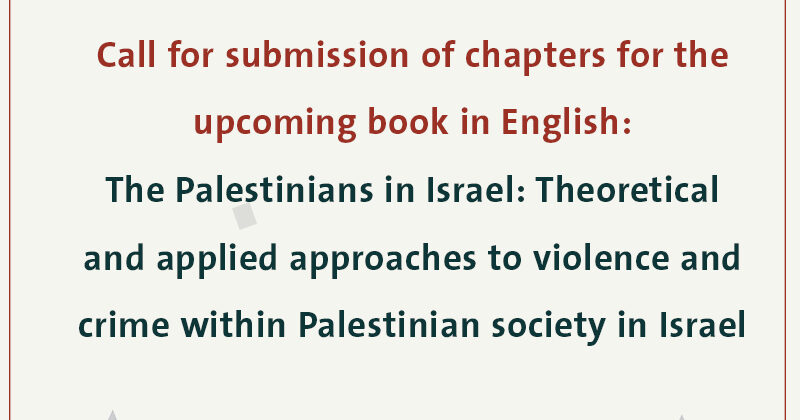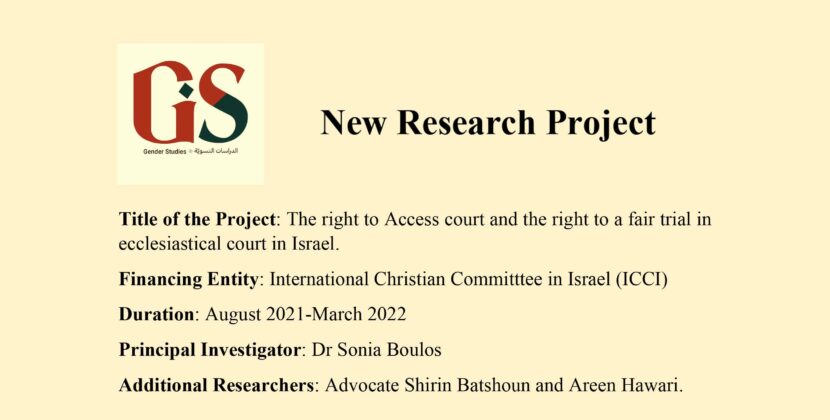This issue of Jadal deals with the themes of gender and sexuality, considering how they intersect with other power structures in the context of colonial Palestine.
The collection of articles considers colonial policies alongside silenced perspectives in the discourse of the Palestinian community on gender issues, with the authors challenging arbitrary separations between sexuality and the politics of colonialism. Several articles in this issue attempt to deconstruct the relationship between colonial practices and existing social patterns related to gender and sexuality. Some of the authors shed light on the colonizers’ attempts to portray themselves as open, liberal patrons of social and sexual freedoms, in contrast to the colonized, who are allegedly backward, oppressive toward women, and sexually harrassive. In addition, other articles discuss Palestinians’ political and social activism and their engagement with issues of gender and sexuality.
Most of the articles in this issue were written following the authors’ participation in an academic workshop during December 2014 which explored gender policies in the colonial context of Palestine, initiated and organized by ‘alQaws for Sexual and Gender Diversity in Palestinian Society.’

The first article is written by lawyer Hadeel Badarne, and examines Israeli political incarceration, which she sees as reflective of the gendered power relations within the capitalist colonial system from the moment of arrest. In the article, the author discusses violent sexual practices to which women are subject in Israeli prisons, and also addresses sexual violence towards male prisoners. Badarne believes that sexual torture does not receive its rightful place in the Palestinian struggle; rather, it remains enveloped in silence, it is not classified as political torture, and it is relegated to the private sphere. She argues that this silencing entrenches sexual taboos and increases the oppressor’s power.

In the second article, Budour Hassan presents a reading of same-sex marriage legalization in the United States, describing the context, debate and radical criticism surrounding it. Hassan suggests that the gay rights movement in the United States is part of a system of white domination, failing to show solidarity with groups who suffer from additional levels of repression such as homosexual/transgender “illegal” immigrants. She adds that the gay rights movement’s choice to struggle for the right to marry is an abridgement of the struggle for sexual liberation, and notes that the decision to legalize same-sex marriage results from the desire to contain and domesticate homosexuals and to preserve marriage as the predominant form of partnership to regulate sexual and emotional life. In her analysis, the author considers the reactions of communities across the Arab world to the decision and criticizes the hypocrisy of supporting same-sex marriage legalization in the U.S. while continuing to internally suppress homosexuals.
The third article, which was written by activists from alQaws, presents a historical analytical reading of the position of the Palestinian left in the Palestinian Liberation Organization on social issues, with special attention to gender relations and homosexuality. The article points to two important factors that impacted their positions: the position of the Soviet Union and later the course of the first Intifada. The article argues that left-wing parties played a role in involving women in politics. However, in terms of gender issues, they prioritized pursuing national liberation from the occupier above social liberation. The authors add that during the first Intifada, the Palestinian national movement acceded to an Israeli scheme that recruited collaborators through entrapment on the basis of participation in illicit sexual relations and taboo social customs, including same-sex relations. Instead of confronting such colonial schemes, the Palestinian national movement adopted slogans that imposed conservative ethical rules, reducing the space for community tolerance and validating internal taboos.

The fourth article, written by Yara Saadi, discusses a campaign carried out by a group of Israeli students at the Hebrew University of Jerusalem’s Mount Scopus campus. These students denounced what they described as “sexual harassment and stone throwing” coming from the direction of the Issawiya neighborhood. The author notes that the campaign’s slogans and content suggested that women felt a lack of security and a violation of their rights as students to participate in the space of the university. However, she reads the campaign in the context of the location of the Hebrew University, as well as Israel’s daily policies of colonization in Jerusalem. Reviewing the project of establishing the university, she notes that the decision of its geographical location was in line with classic colonial strategies followed by the Zionist movement. She then examines the policies and practices of the Jerusalem Municipality in implementing plans to isolate Palestinian neighborhoods and villages, which have blocked development and created segregation, leaving the Issawiya neighborhood trapped and isolated. Based on this analysis, the author argues that the students’ campaign does not revolve around sexual harassment or even around threats to university students, but is primarily based on maintaining control of space.

The fifth article, which was jointly written by Haneen Maikey and Ghaith Hilal, explores perceptions of homosexuality within the Palestinian community, the role of colonialism in forming these perceptions, and homophobia within Palestinian society. It does so by analyzing key stages in Palestinian history since the first Intifada, passing through Oslo, the second Intifada, and the division between Fatah and Hamas. The article also discusses the Israeli propaganda campaign which presents Israel as a “paradise” for homosexuals in the region, whitewashing its image as a colonial state and transforming it into one of a “liberal and democratic” country. The authors suggest that perceptions of homosexuality are always tied to allegations of collaboration with the colonizer and cultural imperialism, confirming this argument by reference to various historical events. The article also touches on the origins of the Palestinian queer movement, and on the formation of their anti-colonialist political consciousness.
The issue also includes two articles whose central topics fall outside the themes of gender and sexuality. These articles engage with issues of national identity and culture and their intersection with colonialism and oppression, as in the articles mentioned above.

Eyad Barghouty’s article examines the Palestinian cultural movement inside the Green Line, describing what he refers to as the “forty-eight situation.” He argues that the cultural movement operates in a context where several barriers that hamper and stall it are interwoven. The article refers to three of them: firstly, the funding barrier, whereby the Israeli government allocates small amounts of funding towards Arab culture as a tool to control the content, orientations and identity of Arab cultural production; secondly, the socio-ideological barrier, which is manifested in the dominance of the Islamic movements and their intellectual and behavioral patterns over large segments of society; and thirdly, the geopolitical barrier, which refers to the chasm between the cultural movement among Palestinian citizens of Israel and the broader Arab world. The author argues that this situation results from the acquisition of Israeli citizenship by Palestinians in the area that became Israel in 1948. This citizenship limits their connections with Arab countries, their audiences and cultural movements, due to the fact that these countries forbid entry into 1948 Palestine so as not to normalize relations with Israel. The article was written following a series of cultural and artistic events that reflected these barriers.

In the last article in this issue, Amer Ibrahim addresses the question of national identity in the occupied Golan Heights. He does so from a perspective which views national identity as a functional form of subjectivity practiced by the individual within specific spatial and temporal conditions. This stems from the fact that Israel’s colonization of the occupied Golan Heights creates different temporal and spatial spheres in the same colonial setting, imposing the challenges of adaptation, coexistence and formation of identity on the colonized. Throughout the article, the author considers national identity through the lenses of time and performativity, and reviews Zionist settler colonial practices in the Golan Heights since their occupation. The author argues that despite the strong presence of a Syrian national discourse in the face of the Israeli colonial discourse, the daily colonial conditions on the ground produce existential situations that result in dichotomous discourses and practices; making the exercise of national identity in the Golan Heights dependent on the time and place within which the identity is exercised. Thus, certain identity practices appear in certain places, and are obscured in other places and times.
The full issue of Jadal is available in Arabic here.






